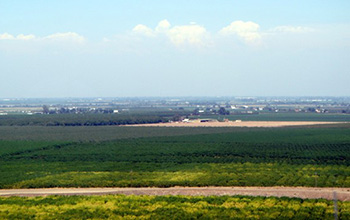
Research News
Study may lead to new ways of growing productive crops
March 11, 2020
Scientists are refining our understanding of how light wavelengths affect the way plants develop their chloroplasts.
Chloroplasts are the “engines” of plants. They use light from the sun and carbon dioxide to produce energy compounds, through the process of photosynthesis. Chloroplasts are filled with chlorophyll, a pigment that absorbs sunlight to kick off that process. Chlorophyll is what gives plants their green color.
Biologists know the major players that build chloroplasts. But they don’t know enough about how a plant’s environment can affect this process.
Take light. It has many qualities, like strength of emission or wavelength. Each variable can hinder or improve a plant’s health.
“One big aim behind studying chloroplasts and photosynthesis is to grow more productive crops,” says Hussien Alameldin, a biologist at the MSU-DOE Plant Research Laboratory. “We already know much about the major processes that happen inside a plant. Now the field is trying to understand the many roles played by a plant’s environment. And light is one of many factors that challenge plants daily.”
In a new National Science Foundation-funded study, Alameldin, Beronda Montgomery, and colleagues examine how far-red light impacts chloroplast development in seedlings. The study is published in the American Journal of Botany.
Far-red is at the extreme end of the visible light spectrum, just before infra-red. Plants have light-absorbing signaling proteins, called phytochromes, to detect that wavelength. It turns out that too much exposure to far-red, however, is harmful to plants.
“If we expose wild plants to excessive amounts of far-red light at an early stage, then transfer them to normal, white light, they do not ‘green,'” says Hussien. “The chloroplasts don’t accumulate enough chlorophyll pigments and are thus less healthy and productive. The phytochromes’ ability to detect far-red light leads to this block of ‘greening.'”
—
NSF Public Affairs,
researchnews@nsf.gov
Source: NSF News
Brought to you by China News








